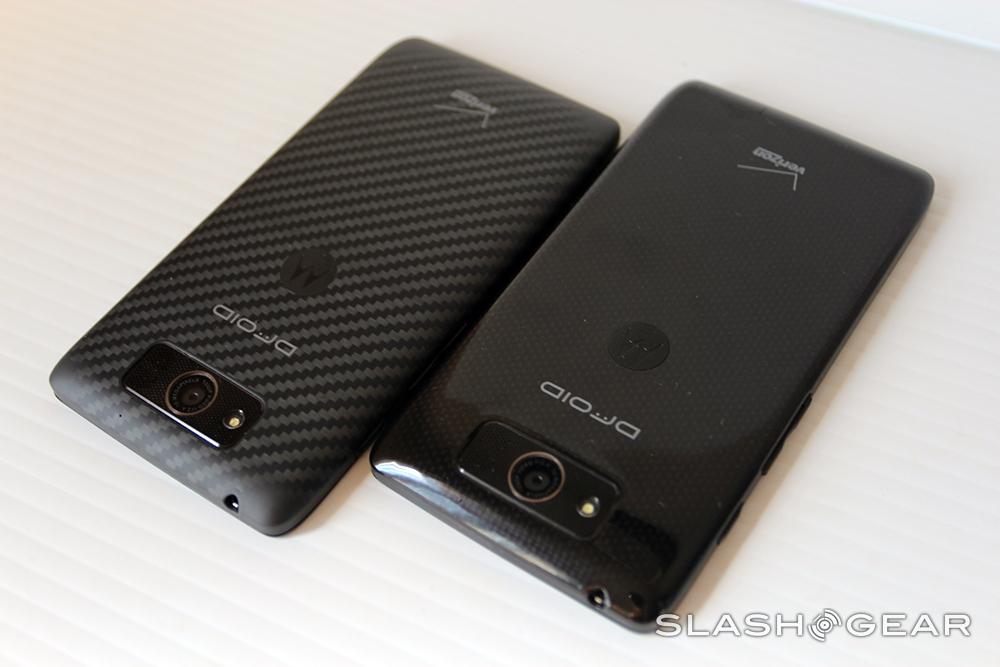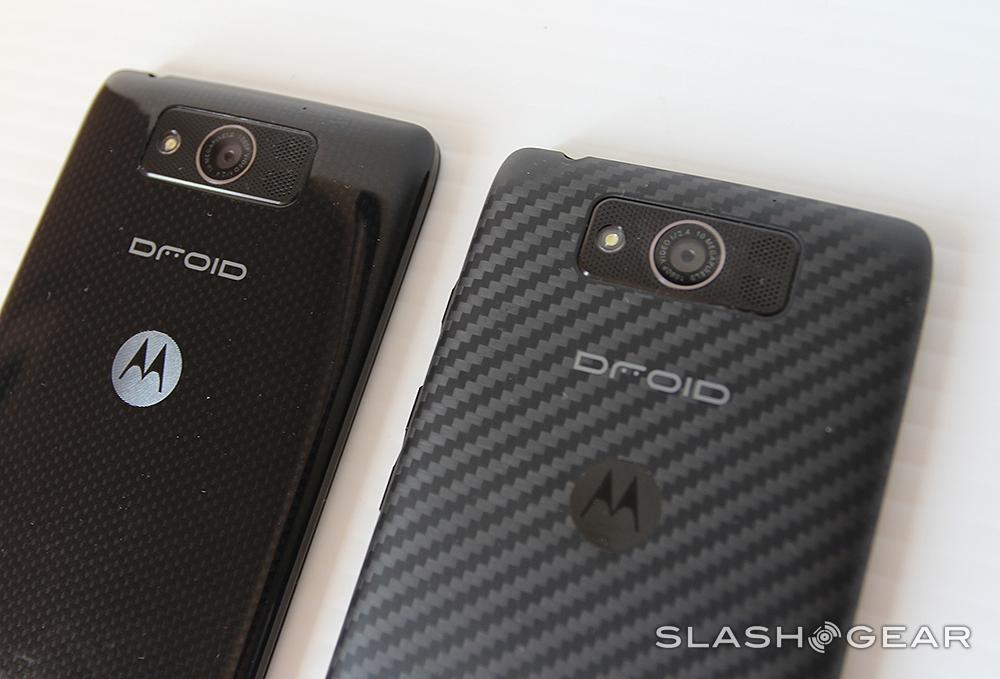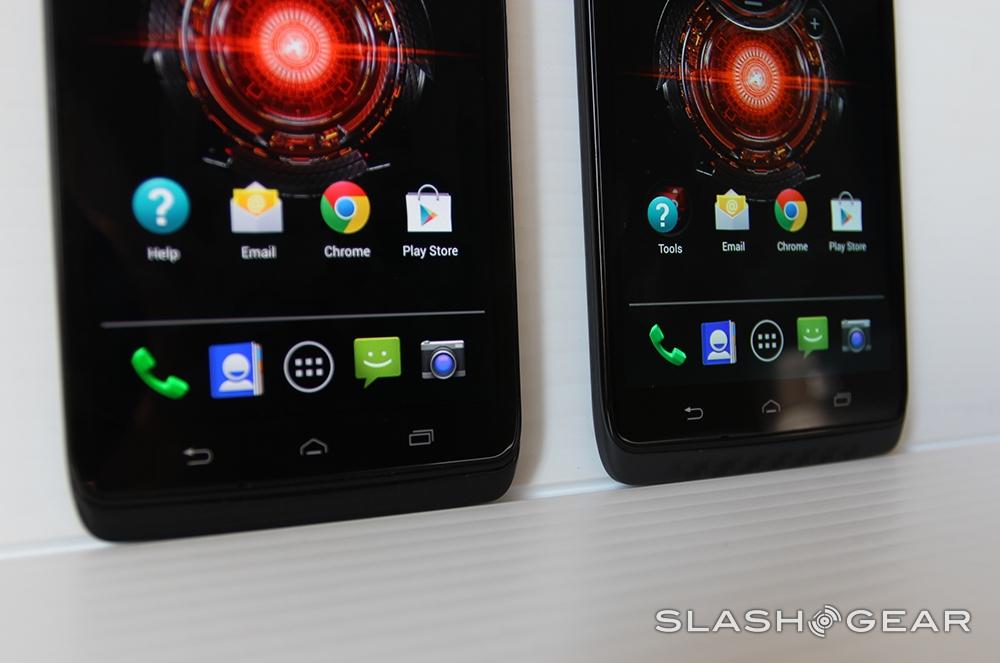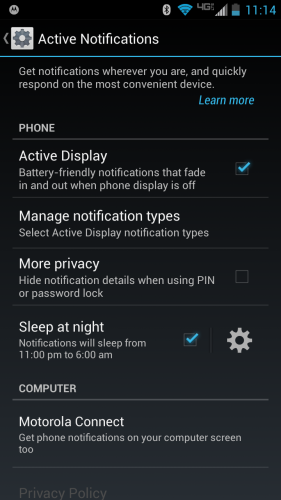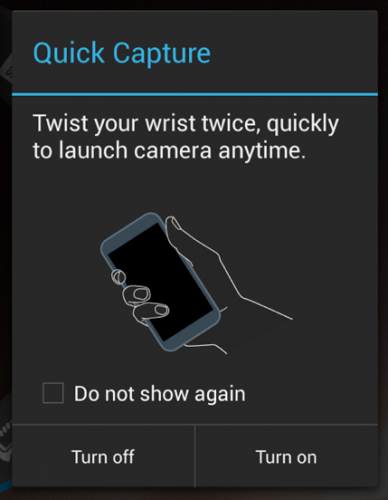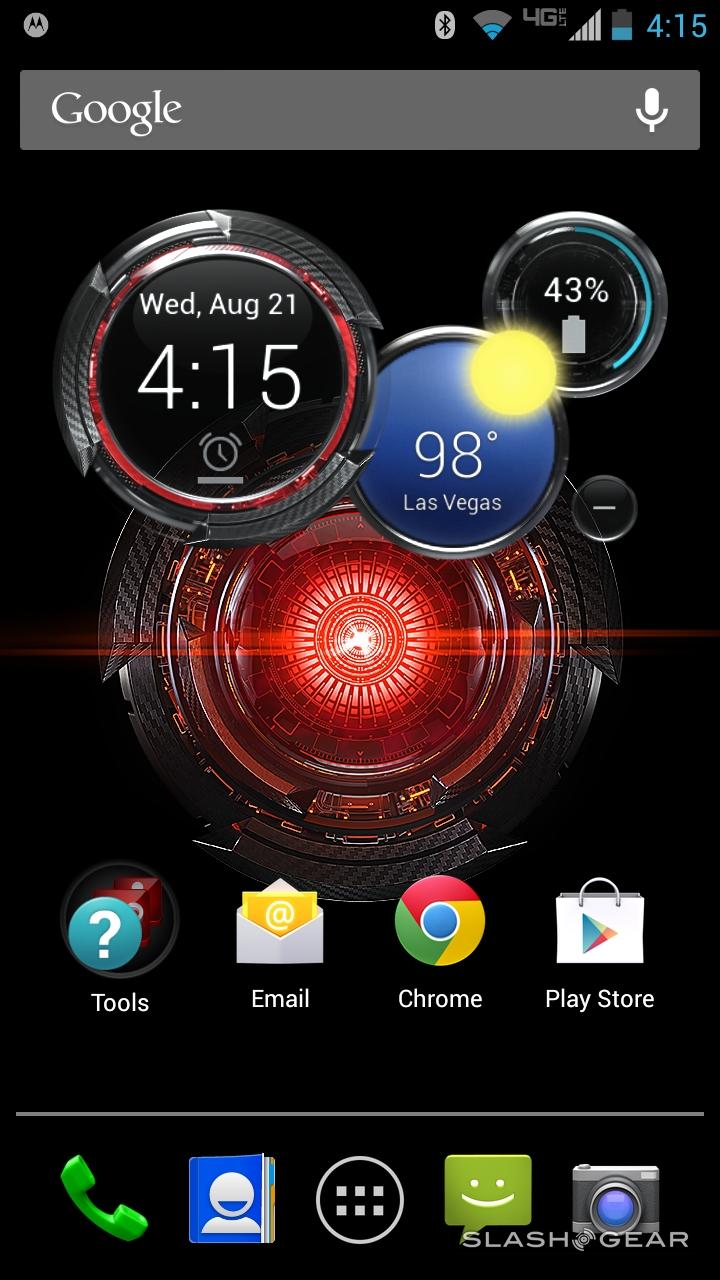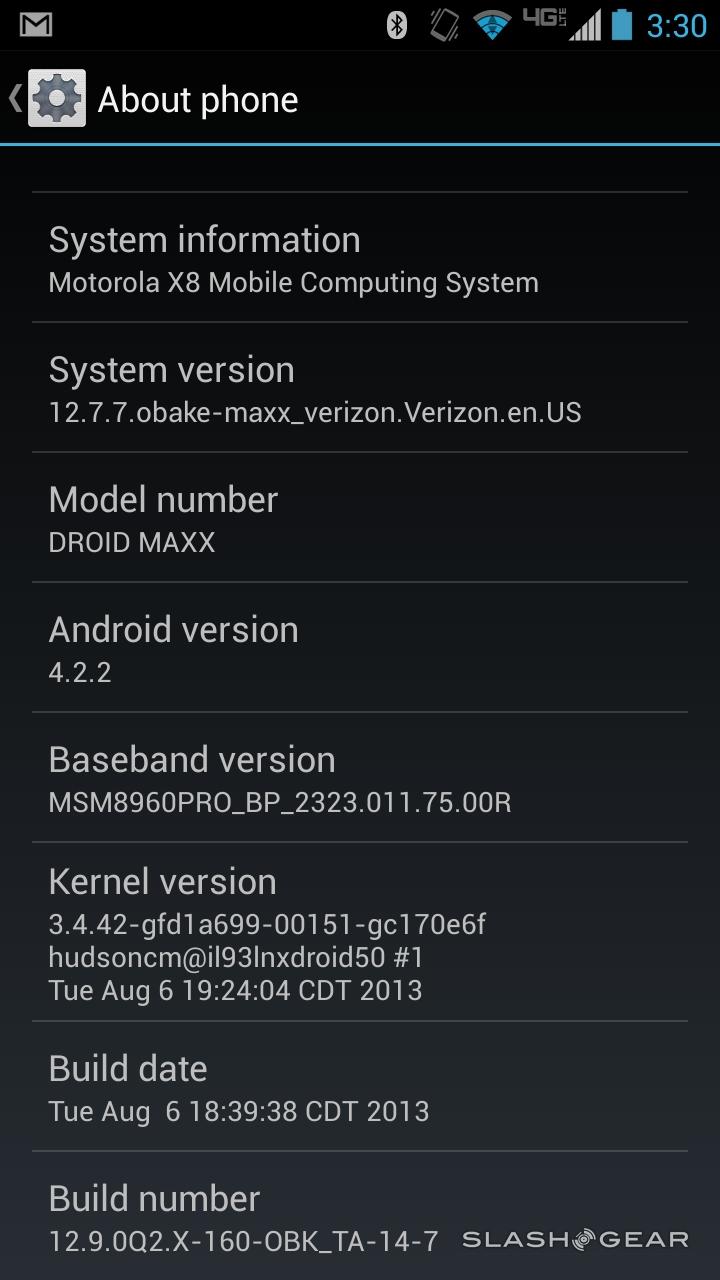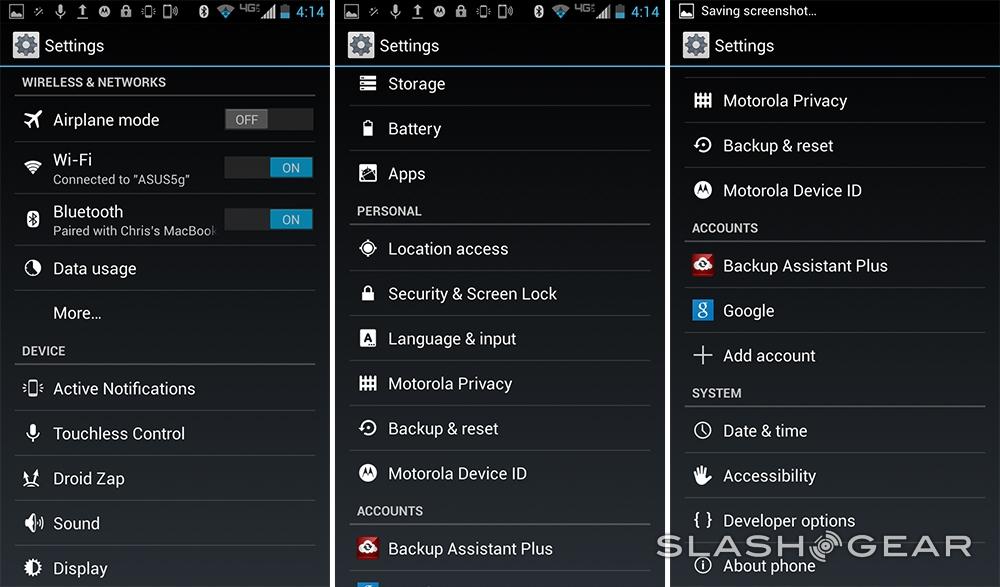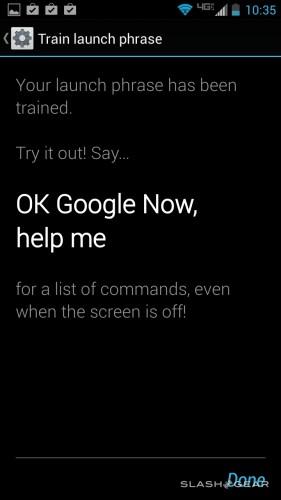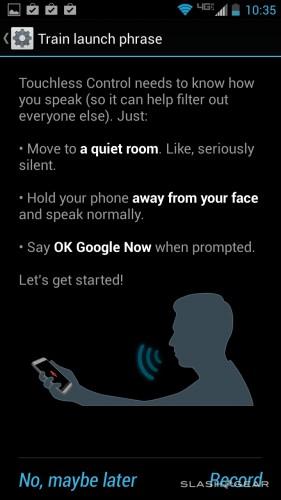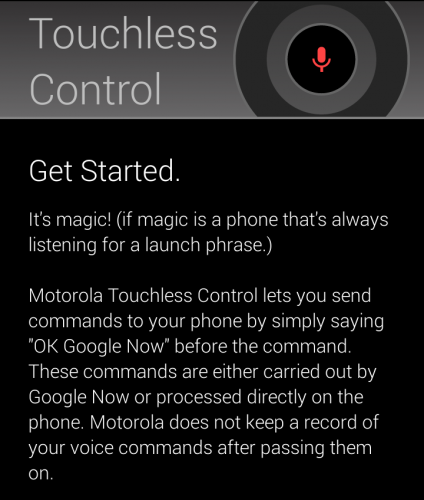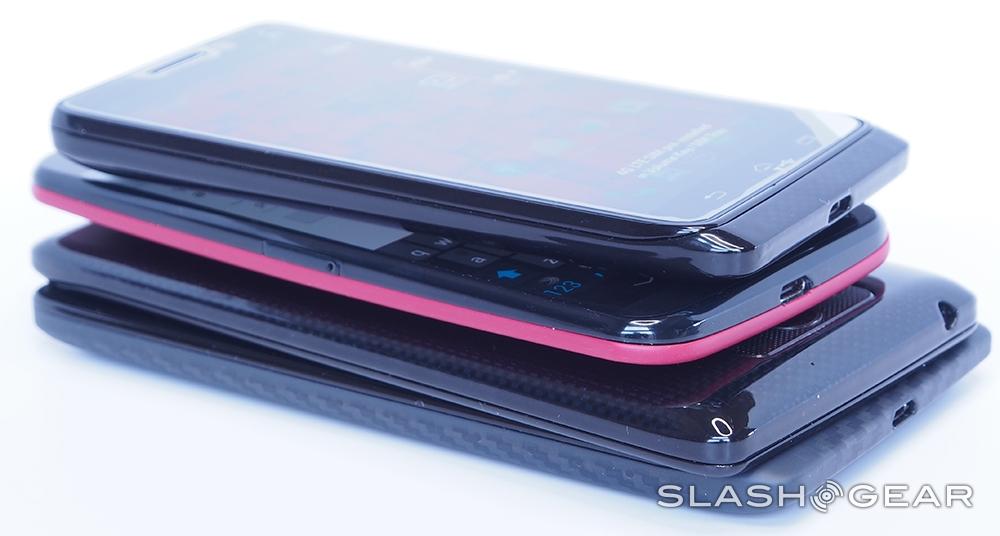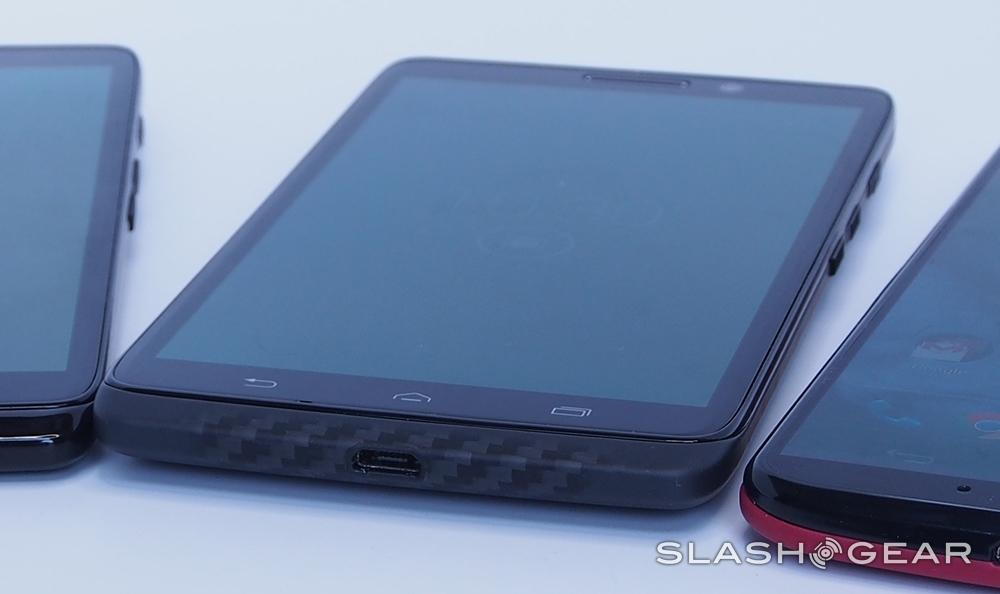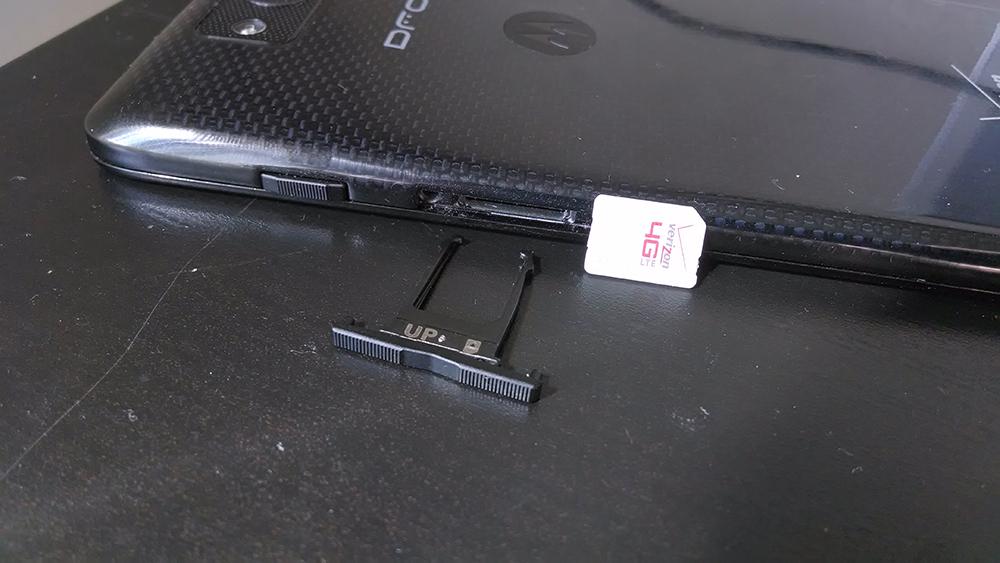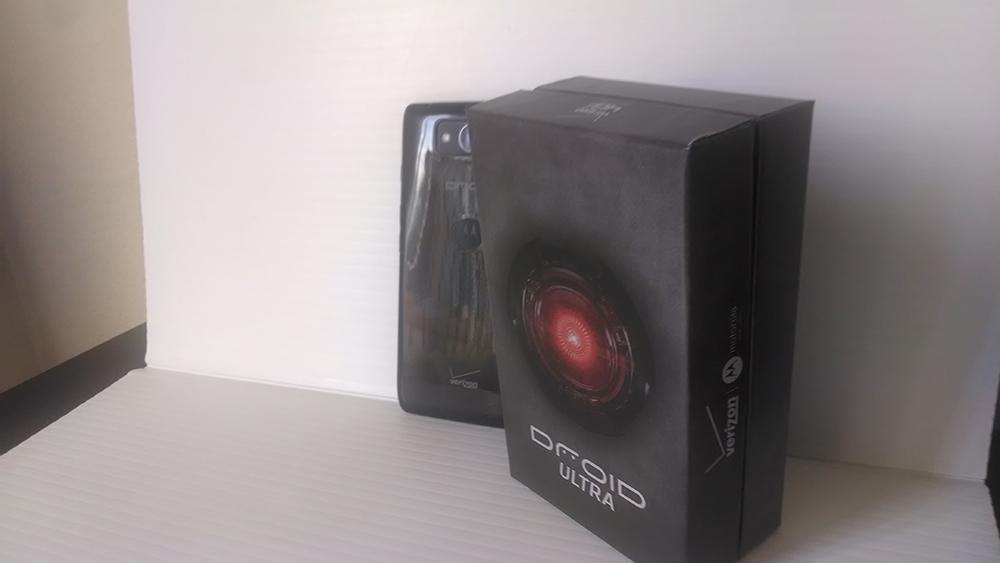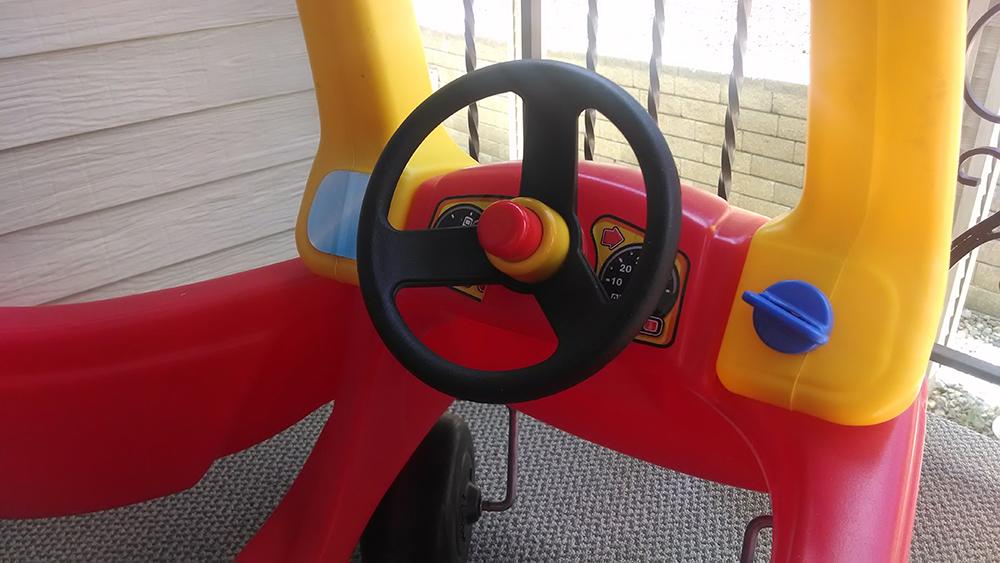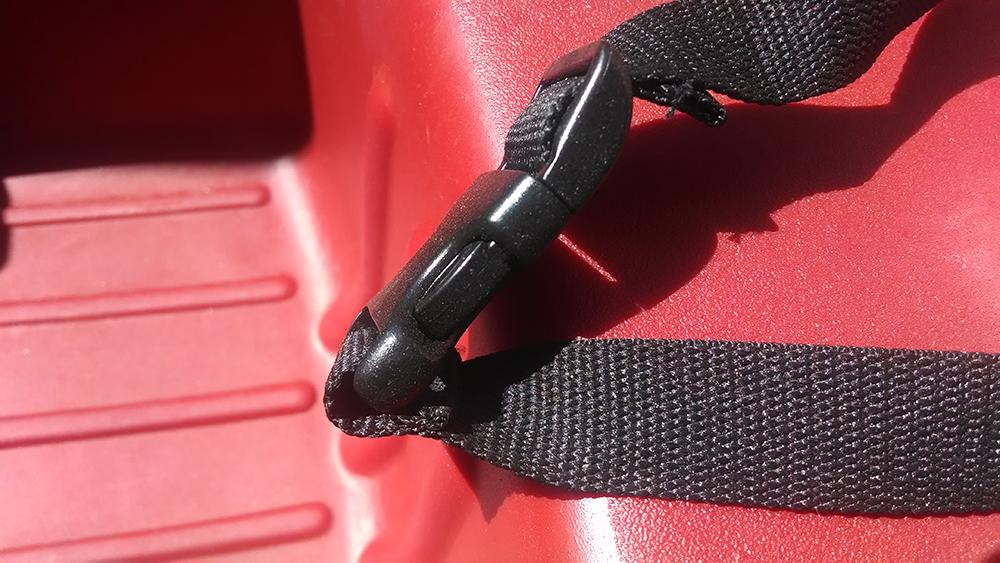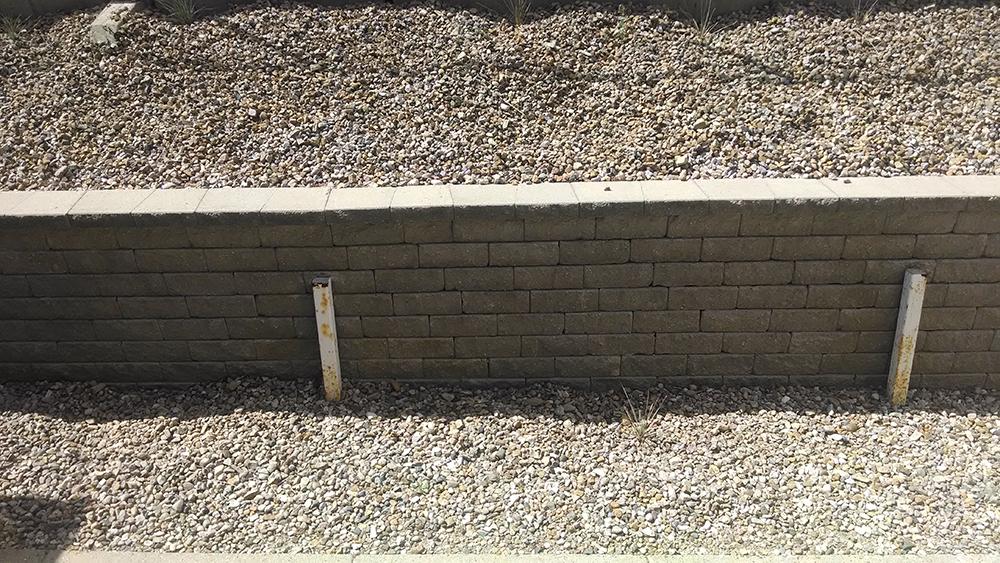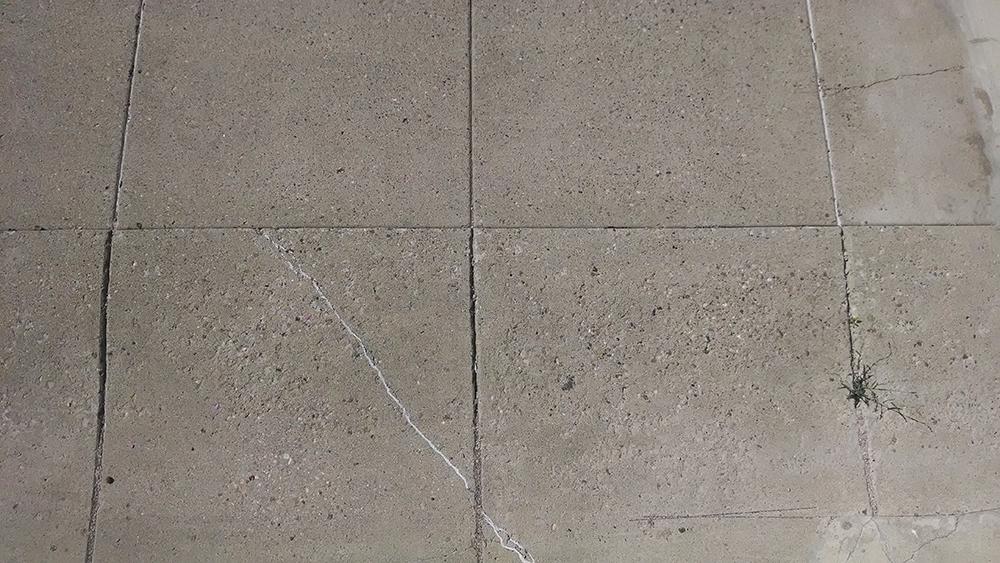DROID Maxx Review
In the DROID Maxx is Motorola's vision for longest-lasting battery life in a device that's part of a very close-knit family of smartphones all released in the same generation. There's a DROID Maxx, a DROID Ultra, a DROID Mini, and the Moto X. These devices deliver essentially the same experience as one another, with only minor differences between each of them. The DROID Maxx provides the most premium experience of the series.
SlashGear has already published reviews of the DROID Ultra and the Moto X, and in describing the DROID Maxx, you'll find references to both of these Motorola devices throughout this review. Keep in mind that these devices are all being released within the span of a couple of weeks of one another – the DROID Maxx, Ultra, and Mini are all on the market with Verizon today, while the Verizon version of the Moto X will be coming later this month.
Hardware
In the DROID Maxx you've got a 5-inch HD AMOLED display running at 1280 x 720 pixels, the same as the DROID Ultra. These devices both have 294 pixels per inch across their face while the Moto X has the same amount of pixels running across a 4.7-inch display, bringing it up to 316PPI. The difference in practice is negligible. Each of these devices work with panels bright and sharp enough for even the most discerning citizen.
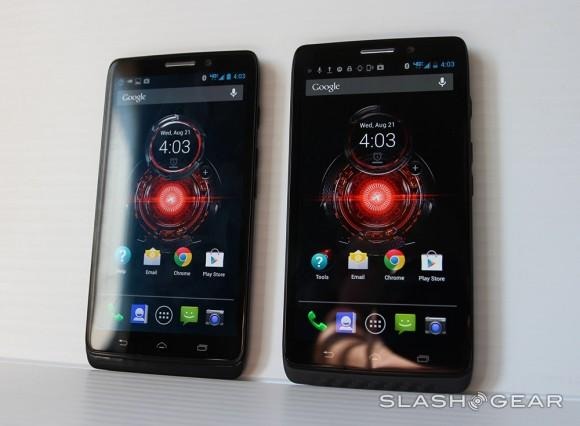
That is, unless you're comparing them to the HTC One or Samsung Galaxy S4, also both out with Verizon right this minute. They've both got displays with 1080 x 1920 pixels across them, and as the Samsung Galaxy S4 works with a 5-inch display and the HTC One works with a 4.7-inch display, they've both got the Motorola family beat for sharpness by a significant margin.
But as it is with all smartphone battles such as this – if you're not holding the whole set up one next to the other, you'll never know the difference. Here in this Motorola hardware is a masterpiece in display technology in and of itself.
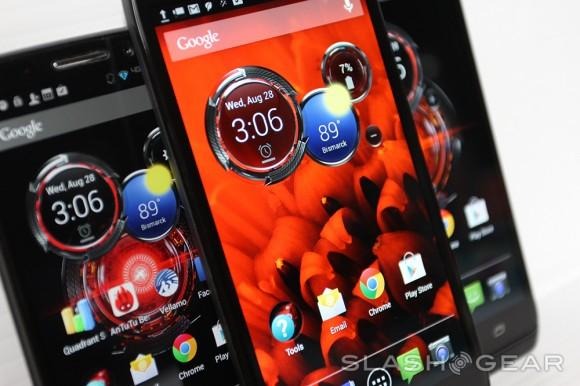
Under the hood you've got a Motorola X8 Mobile Computing system ready to roll – the same as provided in the Moto X and Droid Ultra – and Mini, for that matter. As it was with the other devices we've reviewed, so too does this processor provide a top-notch snappy experience from start to finish. The most important part of this processor setup isn't the speed, though, it's the extra couple of processor cores dedicated to low-power tasks.
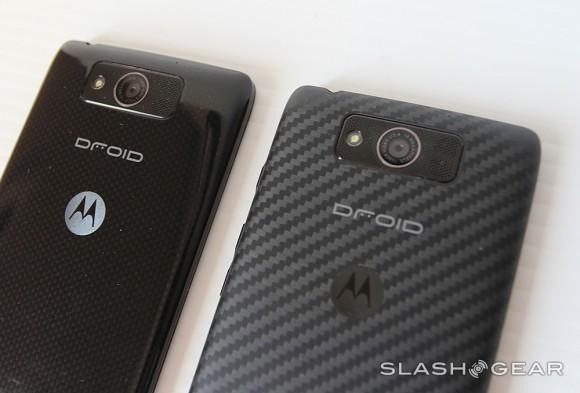
The Moto X8 MCS works a dual-core Qualcomm Snapdragon S4 Pro SoC paired with a couple of extra processors for low-power tasks, one of them used for contextual computing, the other for natural language recognition. These cores allow the device to work with the several new Context-based features the DROID Maxx works with.
You can do everything on the DROID Maxx that you can on the DROID Ultra and the Moto X, and more.
Because the DROID Maxx works with built-in Qi-standard wireless charging technology, you can place this device on any number of standard wireless charging pads. Charge time is essentially the same as it is with a microUSB plugged in the bottom of this phone, and if you already own a device like a Nokia Lumia or any one of their numerous charging pads – or one from Samsung, or LG, etc., the whole process is quite convenient.
Battery
The DROID Maxx works with a massive 3500 mAh battery and Verizon suggests that you'll be getting 48 hours of "usage" out of it. As it turns out, they're not that far off. If you're using this device for checking email and the occasional phone call, you'll get at least 48 hours out of the Maxx. If you're a heavy web browser, 4G LTE tethering, streaming 720p video-streaming, mega data downloader sort of person, you may be able to run the juice down a bit faster.
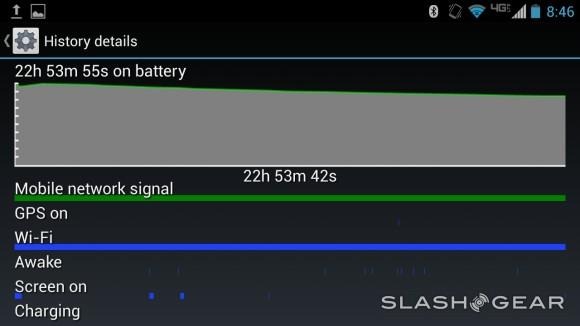
As with most devices working with Qualcomm processors released in the past couple of SoC generations, this device has some major power in standby mode. The battery times we're showing here are always working with the "always listening" touchless controls and Motorola-centric notification screen, always. It's as if these features don't drain the battery at all – they're always in the lowest rungs on the "these apps are draining your battery" list.
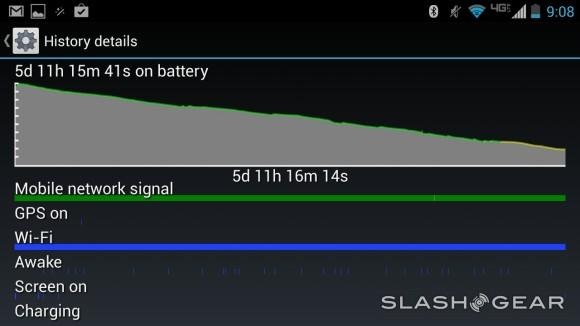
Meanwhile – as always – it's the display that sucks the most battery juice. If you're smart about keeping your display on auto brightness and you make good use of the simple notifications screen, you'll be able to get a day and a half out of the DROID Maxx without issue.
Software
The DROID Maxx works with the exact same software as delivered in the DROID Ultra and the DROID Mini. This means you've got a set of Google's newest Android apps and a user interface that's nearly vanilla. Motorola adds their own camera interface, their own connections to Motorola-centric services, and you've got a set of features you'll not find on any other device – yet.
Verizon also adds a set of apps as they always do, suggesting that you'll want to check your data usage and use their navigation system wherever possible. Of course you've also got Google Maps for navigation and you've got the Google Play app store for all the app downloading you could possibly want – these devices are real-deal Google certified, after all.

The DROID Maxx works with the "OK Google Now" hands-free assistant feature that's presented on the rest of this most recent Motorola smartphone family as well. You'll have to activate it in your settings – and you'll be prompted to do so from the first time you open your smartphone with a note that makes clear that you don't have to, but you've certainly got the ability to make it so.
With this hands-free system on, you're using the Motorola 8X system to power an "always listening" microphone that's able to hear you from as far away as a few feet. While it's not perfect, it's surprisingly well tuned to the voice you program it to recognize when you first open it. This system does not work very well in noisy places or when you've got sound playing on the device itself – in and out at the same time just don't mix.
Aesthetic and Feel
While the DROID Ultra works with a slippery hard plastic – that's certainly not low quality, but is hard plastic over Kevlar nonetheless – the DROID Max works with the same quality rubbery Kevlar material we've seen on the DROID RAZR family. This material wraps around the sides and the bottom of the smartphone and gives the whole device a unique feeling not replicated on any of the other Motorola devices.
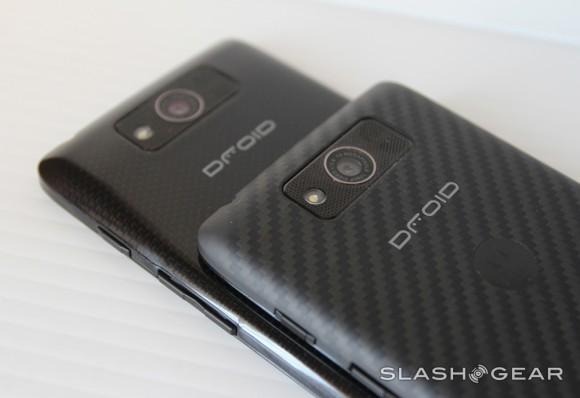
There's a similar material wrapped around the custom-made Moto X, but not necessarily around the Moto X coming straight from Verizon. We'll still have to wait to see the final release edition of the Verizon Moto X to tell whether or not it'll be working with the same rubbery plastic as delivered in the customized version made with Moto Maker. Both the Moto X and he DROID Ultra have a high-quality unique feeling simply not attained by the DROID Ultra or the DROID Mini.
Camera
The DROID Maxx works with the exact same camera setup as delivered in the Moto X, DROID Ultra, and DROID Mini. Each of these devices works with the "flick twice to start camera" feature, and they all work extremely well for capturing images and video quickly. Have a peek at a few examples of images captured with the DROID Maxx below, otherwise head to the reviews of each of the other devices to see how well this camera setup does on the fly.
I need not remind you that these devices all work with the exact same camera setup – hardware, software, and processor. Top to bottom, start to finish.
Wrap-up
If you're deciding between the DROID family members Mini, Maxx, and Ultra, you'll be dropping a difference of $100 here or there for storage space and screen size. The big differences between the Maxx and the Ultra lie in their internal storage space – 16GB for the Ultra and 32GB for the Maxx, their battery size (and therefor device thickness), wireless charging, and body makeup.
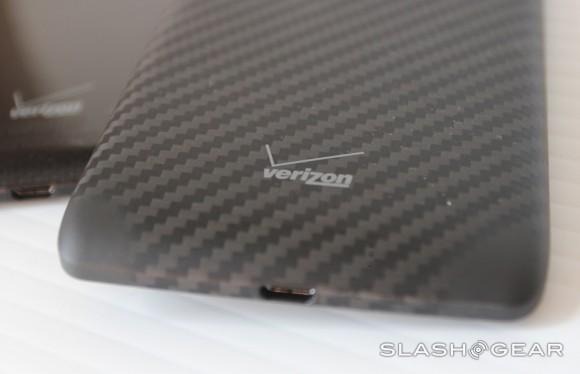
The DROID Maxx is delivered by Verizon for $299 and it comes in a single configuration – for the time being. The DROID Mini costs $200 less while the DROID Ultra costs $100 less, and the Moto X will cost you $199 or $249 depending on your desired storage size. And the whole collection brings – and I can't stress this enough – what's more or less the same experience, no matter the size or shape.

